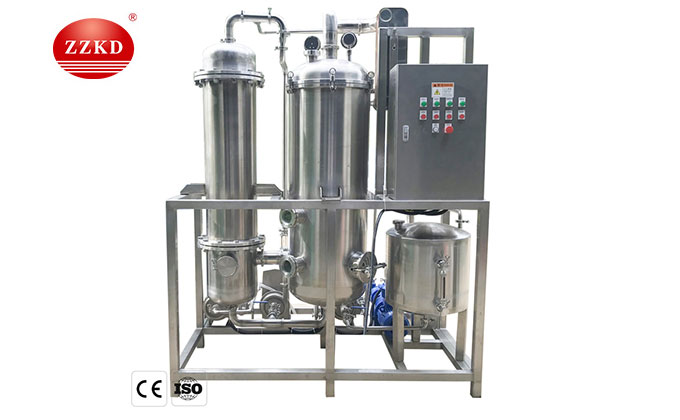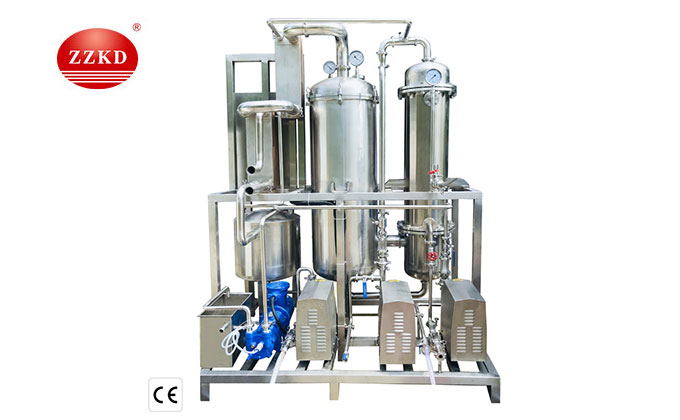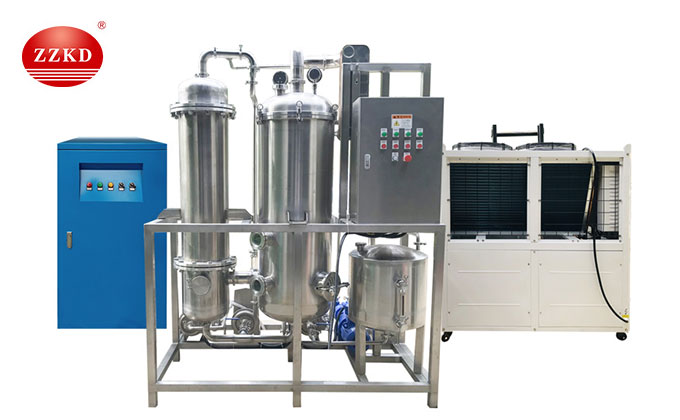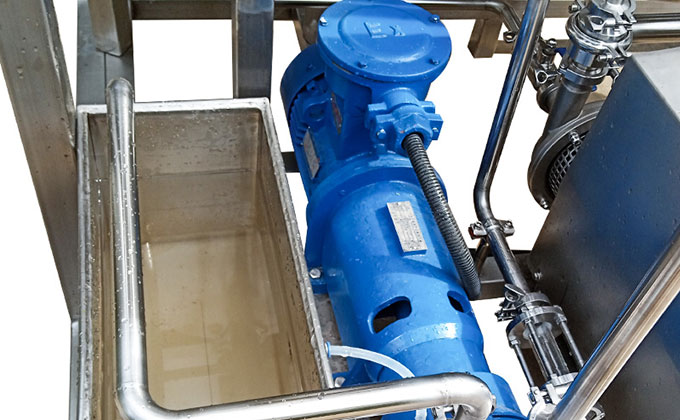Falling film evaporator is a kind of thin film evaporator. Thin film evaporators can be divided into three types: rising film evaporators, small falling film evaporators and wiped film evaporators. As a high-efficiency evaporator, the falling film evaporator is gradually suitable for liquid concentration in the chemical industry, light industry, and food processing industry due to its advantages.
Falling film evaporator is a kind of high-efficiency evaporation equipment, which has the advantages of small temperature difference, short residence time, long working life, compact structure and unlimited effect number. According to the different forms of the liquid distribution wall, it is mainly divided into: plate type small falling film evaporator, vertical tube falling film evaporator and horizontal tube falling film evaporator. In recent years, with the rise of energy prices and the continuous improvement of environmental protection levels, the industry has higher and higher requirements for energy-consuming equipment. Improving the heat transfer performance and evaporation efficiency of the evaporator is of great importance for engineering investment and energy saving. important meaning.
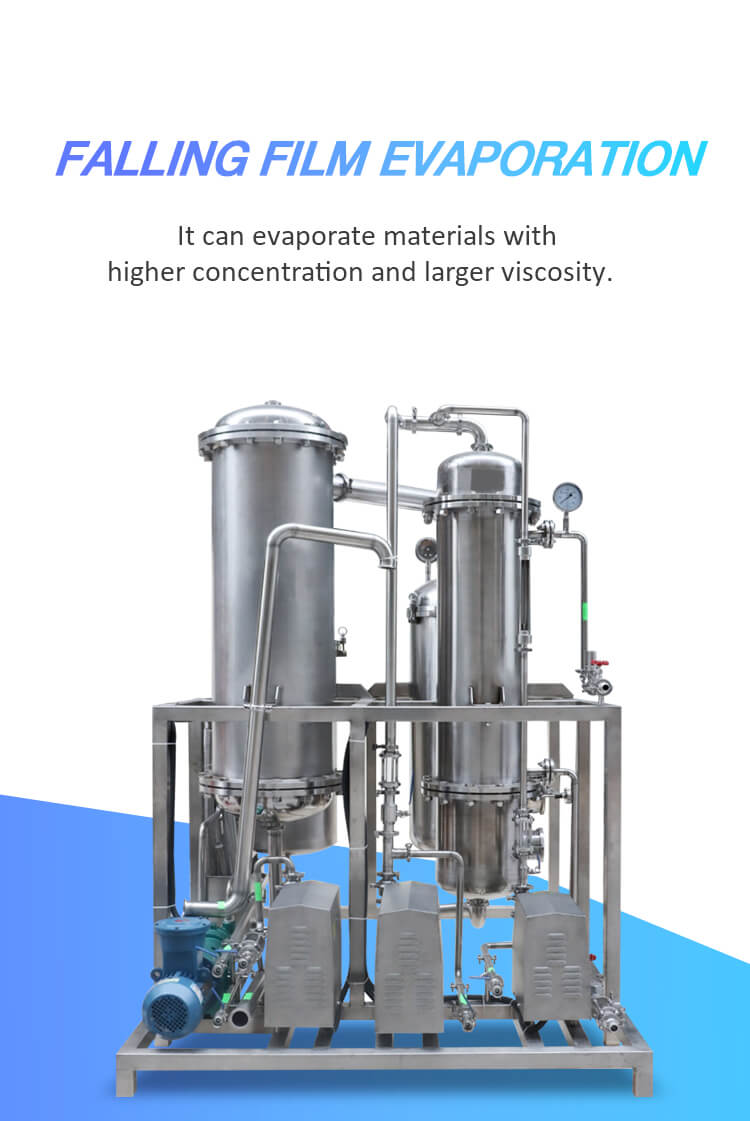
The Principle of Falling Film Evaporator:
Falling film evaporation is to add the feed liquid from the upper tube box of the heating chamber of the small falling film evaporator, and distribute it evenly into each heat exchange tube through the liquid distribution and film forming device. flow up and down. During the flow process, it is heated and vaporized by the shell-side heating medium, and the generated steam and liquid phase enter the separation chamber of the evaporator together. After the vapor and liquid are fully separated, the steam enters the condenser to condense (single-effect operation) or enters the next-effect evaporator as The medium is heated to achieve multi-effect operation, and the liquid phase is discharged from the separation chamber.
The falling film evaporator can be used in three types: reverse flow, forward flow, and cross flow according to the material properties. The operation of the equipment is basically carried out in a negative pressure state, and the safety performance is good. The evaporation temperature is low, and part of the secondary steam is re-inhaled into the first-effect heater through the jet heat pressure pump, and the heat is fully utilized, and the evaporation temperature is relatively low. The concentration ratio is large, and the falling film evaporation makes the viscous material liquid easy to flow and evaporate, not easy to scale, the concentration time is short, and the concentration ratio can reach 1:5. The equipment operates in a vacuum state, the material evaporates at low temperature, and the heating time is short, which can keep the original flavor of the material to the greatest extent, and the material can be continuously fed in and out, which is easy to operate, maintain and clean.
Models and Components of Falling Film Evaporators:
Falling film evaporator is an evaporator that our company currently mainly promotes. There are currently five models: KDJM-50, KDJM-200, KDJM-300, KDJM-600, KDJM-1000.
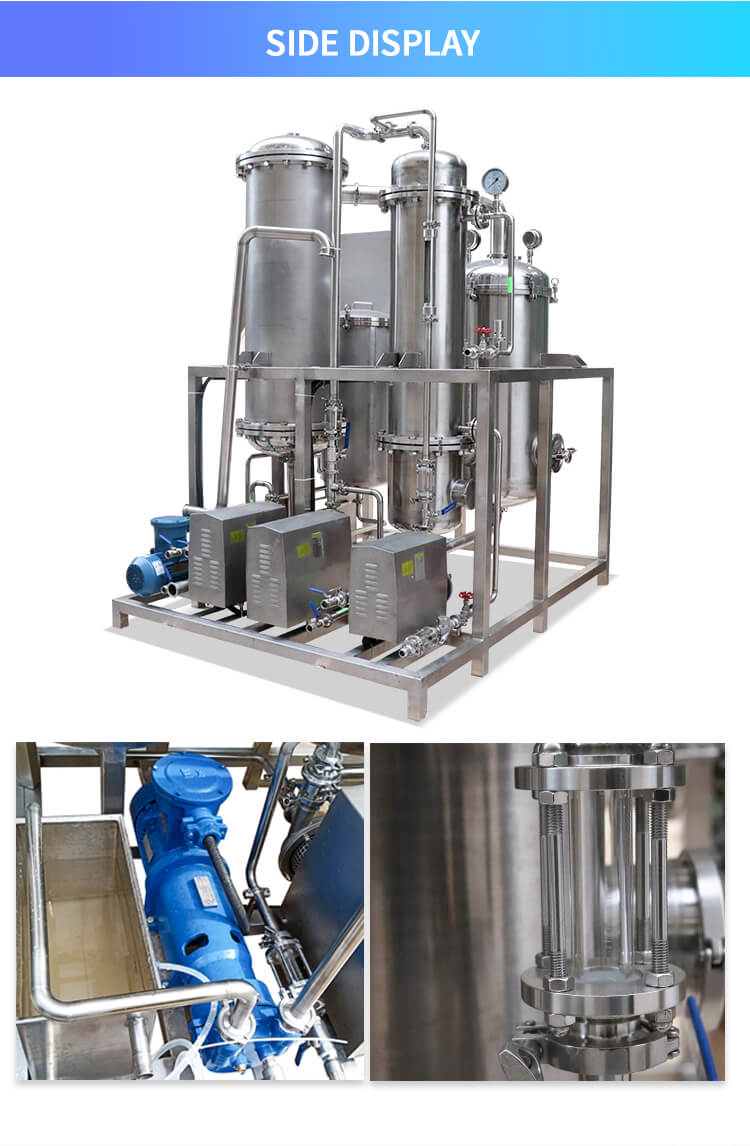
The main body of the equipment is composed of Ⅰ, Ⅱ, Ⅲ effect heaters, separators, heat pressure pumps, condensers, sterilizers, insulation pipes, material pumps, water pumps and instrument cabinets.
1. Evaporator: shell and tube heat exchanger. The liquid material is heated and evaporated through the heating steam through the heating tube. The concentrated liquid and the secondary steam generated by evaporation enter the distributor for separation. A liquid level switch for controlling water distribution is installed at the bottom.
2. Separator: It is a tank with a single-layer structure. The upper secondary steam interface communicates with the condenser, and the lower interface communicates with the evaporator.
3. Preheater: plate type/tube type.
4. Condenser: condenses the secondary steam for recycling.
5. Condensation tank: a tank with a single-layer structure, and the tank body is equipped with a liquid level switch to control the liquid level. By connecting with the pump at the outlet, the condensate in the tank can be automatically discharged.
6. Heating chamber, the heating chamber is tube-and-pipe scaling, and the liquid material passes through the tube side, and the material is heated and evaporated in it.
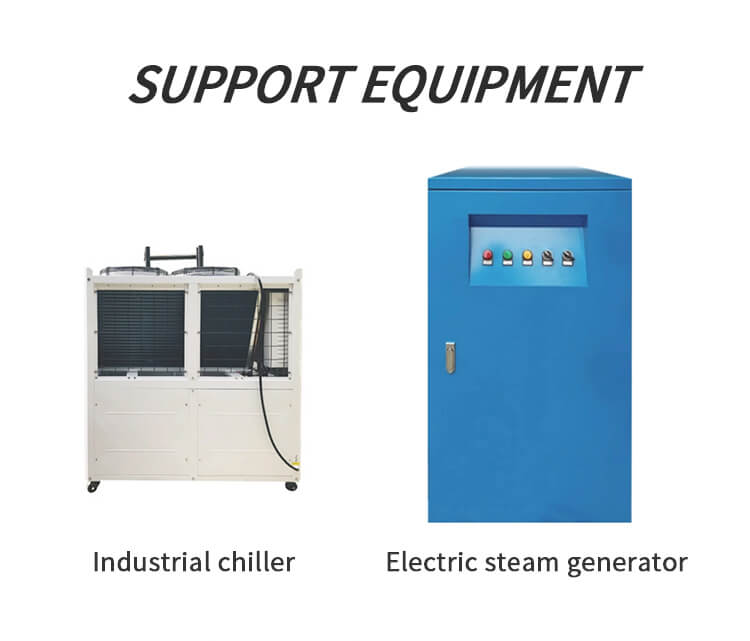
Features of Falling Film Evaporator:
At present, small falling film evaporators are generally used for evaporation and concentration of water or organic solvent solutions in medicine, food, chemical, light industry and other industries, and can be used for waste liquid treatment in the above industries.
1. The feed liquid of the falling film evaporator is added from the top of the evaporator, and falls in the form of a film along the tube wall under the action of gravity, and evaporates, thickens and concentrates during the process. A liquid is obtained at the bottom of the evaporator. Falling film evaporators can evaporate materials with higher concentrations and higher viscosities.
2. Since the solution moves in the form of a film in the one-way evaporator, the heat transfer coefficient is relatively high.
3. The residence time is short, it is not easy to cause material transformation, and it is suitable for the treatment of heat-sensitive materials.
4. The liquid retention is small, and the small falling film evaporator can operate quickly according to changes in energy supply, vacuum degree, feed amount, concentration, etc.
5. Since the process fluid moves only under the force of gravity instead of relying on high temperature difference for propulsion, low temperature difference evaporation can be used.
6. The falling film evaporator is suitable for the evaporation and concentration of foam materials. Since the raw material liquid evaporates in the form of a thin film in the heating tube, a gas-liquid separation is formed. At the same time, at the bottom of the effect body, as long as no part of the feed liquid and all the secondary steam enter the separator to strengthen the separation, and the feed liquid is solidified, most of the feed liquid is pumped away. The process does not cause much impact, preventing the formation of foam.
The small falling film evaporator uses a compressor to increase the energy of the secondary steam, and uses the energy-increased secondary steam to recover the latent heat of the secondary steam. Specifically: the secondary steam generated by the evaporator is compressed by the adiabatic compressor to increase its pressure and temperature, and then sent to the heating chamber of the evaporator as heating steam, where it condenses and releases heat, so the latent heat of the steam is recovered for use .
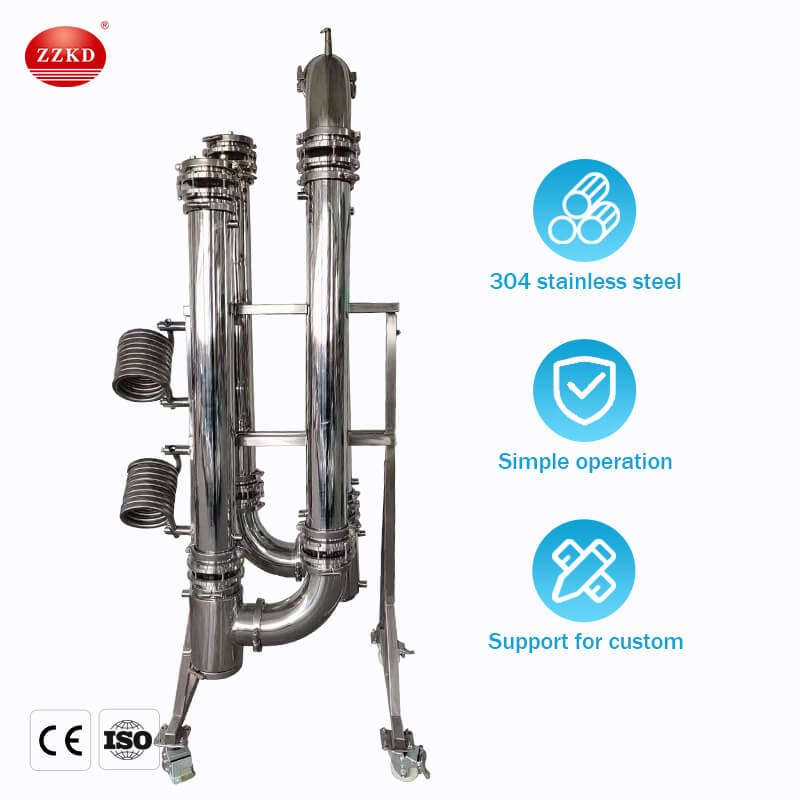
Advantages of Falling Film Evaporators:
1. The material in the tube side shows convective boiling after heating, so the surface state of the heat exchange tube hardly affects the boiling of the material.
2. The pressure drop is almost 0, and the material in the tube side is in a normal pressure environment, and it flows down along the inner wall of the tube by its own gravity, which can save energy;
3. The residence time of the material in the heat exchange tube is short, which will not affect the chemical properties of heat-sensitive materials;
4. The amount of material retention in the tube space is very small;
5. The material in the heat exchange tube is in the form of a thin film with a fast flow rate and a large evaporation heat transfer coefficient;
6. Because the material in the tube side flows down along the inner wall of the tube by its own gravity instead of being pushed by the pressure difference, a low temperature difference can be selected;
Working Process of Falling Film Evaporator:
The falling film evaporator belongs to a type of thin film evaporator, and its material flows along the wall of the heating tube in the form of a film for heat exchange and evaporation. According to the performance of the material, it can be used in three types: reverse flow, forward flow, cross flow and advection flow. The operation of the equipment is basically carried out in a negative pressure state, and the safety performance is good.
1. Downstream: the solution and the steam flow in the same direction, and both flow from the first effect to the last effect in sequence. The raw material liquid is pumped into the first effect, depending on the pressure difference between each effect, it will automatically flow into the next effect, and the finished liquid is pumped out from the final effect (generally operated under negative pressure). Due to the low pressure of the latter effect, the boiling point of the solution is also low. When the solution enters the latter effect from the former effect, part of the water will be flashed, and more secondary steam will be generated. Because the concentration of the latter effect is higher than that of the former effect, the operating temperature is lower. , often the heat transfer coefficient of the first effect is much higher than that of the last effect. Co-current processes are generally suitable for processing materials that are heat sensitive at high concentrations.
2. Countercurrent: The raw material is sent from the final effect to the front effect sequentially by the pump, and the finished liquid is discharged from the first effect, and the material liquid and steam flow in reverse. It is generally suitable for handling solutions whose viscosity changes greatly with temperature and concentration, and is not easy to handle heat-sensitive materials.
3. Cross-flow: It is a combination of forward and reverse flow processes, which has the advantages of forward and reverse flow and avoids its disadvantages, but the operation is complicated and requires a high degree of self-control.
4. Advection: Each effect is fed with materials and the finished solution is produced. Each effect has crystallization, which can be separated in time. It is generally used for the evaporation of saturated solution.
The falling film evaporator can ensure that the material will not be denatured during the evaporation process. For the chemical and pharmaceutical industries, it is very important to ensure the original properties of materials, which will affect the quality and safety of products.
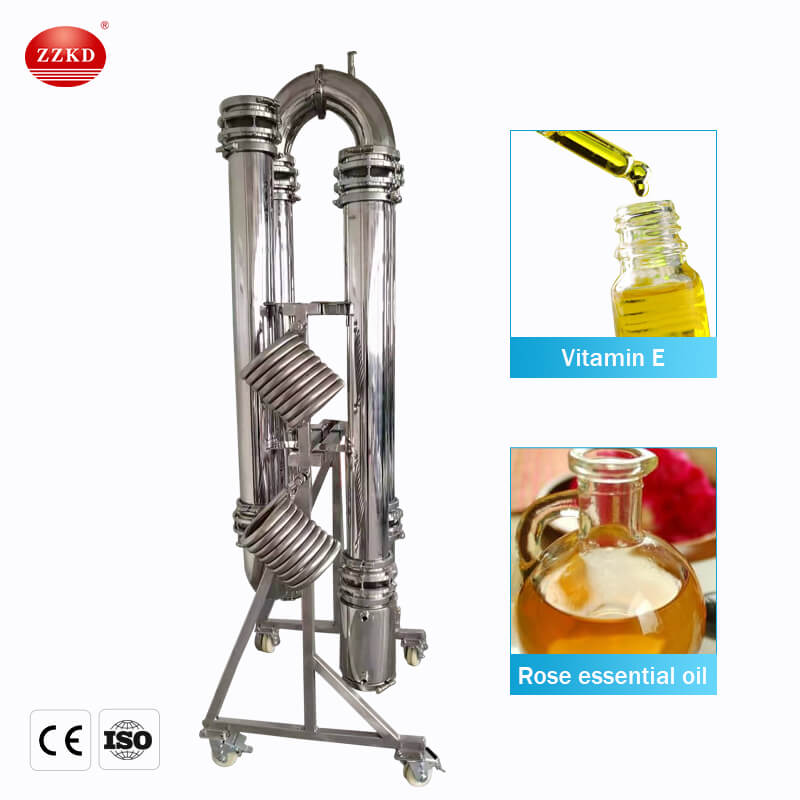
Precautions Before Running the Falling Film Evaporator:
1. Before running, check whether there are any problems in the work record. After checking, repairing and correcting, check whether the relevant flanges, sight glasses and manholes are in their respective positions and fastened; check whether the power supply of the power distribution cabinet is powered; notify Prepare steam in the boiler room; check whether the material pumps are operating normally (the oil level reaches the center line of the oil window) before starting the machine, open the mechanical seal cooling water valve of the material pump, and check whether the cooling effect is achieved. Manually turn the couplings of each pump, there should be no jamming phenomenon; check whether the material valves and water valves can be closed tightly to the use state; start the sealing water to the pump, check whether the water flows in and out, and correct it through the shell if necessary. Check the condensing system; check the lubricating oil level of each pump. If the lubricating oil is insufficient, fill it in time to ensure that each pump has sufficient lubrication conditions; Turn on the condensate pump to check; start the condensate water circulation system and open the manual valve, and the cooling water flows through the condenser to see if there is condensate flowing out of the condenser.
2. Open the cooling water inlet and outlet valves to start the water supply pump, adjust the opening of the water outlet valve (small first and then larger) to supply water to the condenser so that the water returns to the cooling water tower, and record the inlet and outlet water temperature of the cooling circulating water.
3. The equipment is ready to be vacuumed, check whether the cooling water pump supplies cooling water, and check whether the industrial water enters the water ring vacuum pump. And start the cooling water pump and vacuum pump to make the vacuum degree of the condenser reach 0.085~0.095. Check the vacuum record of the condenser and the first effect. Note: If the evacuated degree is less than 0.085 at 30 minutes, look for leaks.
4. Preheat the evaporator. When the shell side of the first effect reaches 200mbar, steam can be passed into the evaporator, that is, water will start to evaporate. When condensate appears on the sight glass of the water separator tank, start the condensate pump.
5. Full load water operation, when the temperature of the material exceeds 50"C, increase the feed and steam until it reaches the calibration value, and the temperature of the first-effect separator reaches 70-75"C to observe the discharge to ensure that the liquid level remains unchanged (constant) If the liquid level of the separator rises, it may be that the evaporation rate is too low or the feed volume is too high. If the liquid level of the separator cannot be reduced by adjusting the steam flow or feed volume, then there is a vacuum leak in the pump system. Ensure that there is no condensate deposited on the shell side. After the first effect temperature starts to rise during the preheating process, (or the vacuum degree of the condenser drops) the water volume increases to ensure a constant outlet temperature!
Why Choose Us
Professional extraction equipment manufacturer
Zhengzhou Keda Machinery Equipment Co., Ltd. is a family integrating production and trade. Our main product is laboratory extraction equipment. Falling film evaporator is one of our main products for sale. Our falling film evaporator models are: KDJM-50, KDJM-200, KDJM-300, KDJM-600, KDJM-1000 can also be customized according to your needs. The company has been established for more than ten years and has provided equipment for tens of thousands of enterprises and individuals at home and abroad The solution has won unanimous praise from domestic and foreign customers.
Fast delivery
We have warehouses in Los Angeles in the United States, Valencia in Spain, and Thailand. We can choose the nearest warehouse for delivery according to the customer's geographical location, ensuring that the customer receives the goods quickly.
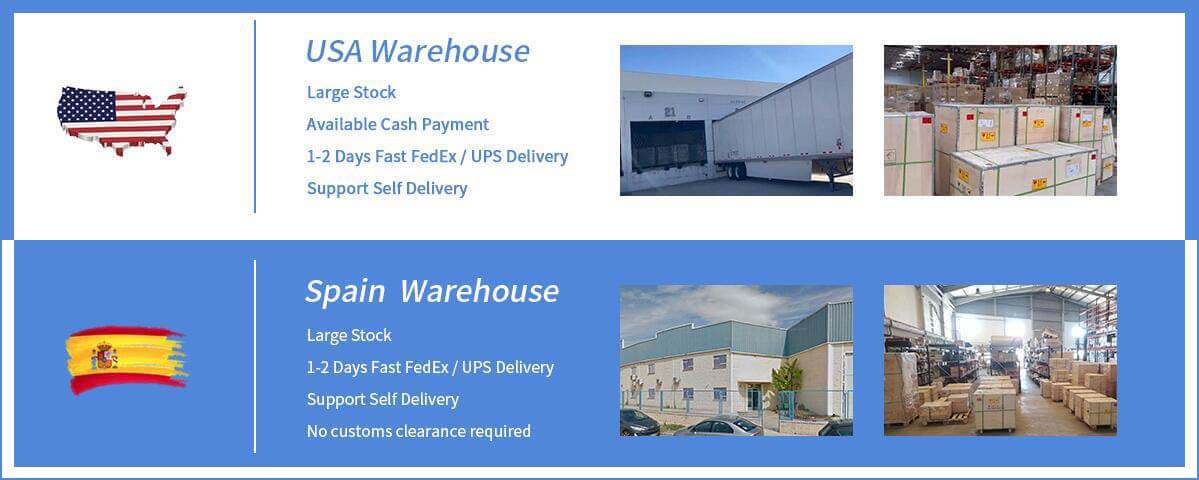
Perfect after-sales team
We provide a one-year warranty service for the products we sell. We have a professional after-sales team to deal with customers' after-sales problems, and can provide corresponding technical guidance through videos and other methods.
Parameter
Model | FFE-200 |
Evaporation(L/H) | 50 |
Falling film heater( mf ) | 3 |
Evaporative separator(L) | 60 |
Steam water separator(mm) | 200 |
Condenser( mf ) | 6 |
Recycling receiver(L) | 50 |
Material balance tank(L) | 100 |
Inlet pump(L/H) | 1000 |
Inlet pump(L/H) | 1000 |
Model | FFE-200 |
Evaporation(L/H) | 50 |
Falling film heater( mf ) | 3 |
Evaporative separator(L) | 60 |
Steam water separator(mm) | 200 |
Condenser( mf ) | 6 |
Recycling receiver(L) | 50 |
Material balance tank(L) | 100 |
Inlet pump(L/H) | 1000 |
Inlet pump(L/H) | 1000 |

